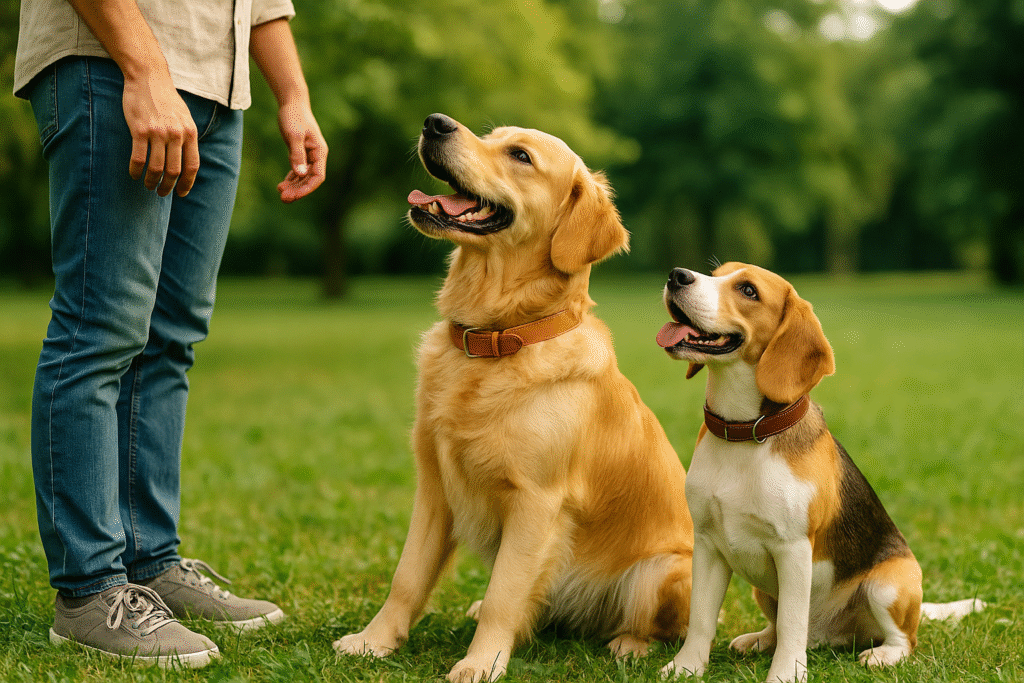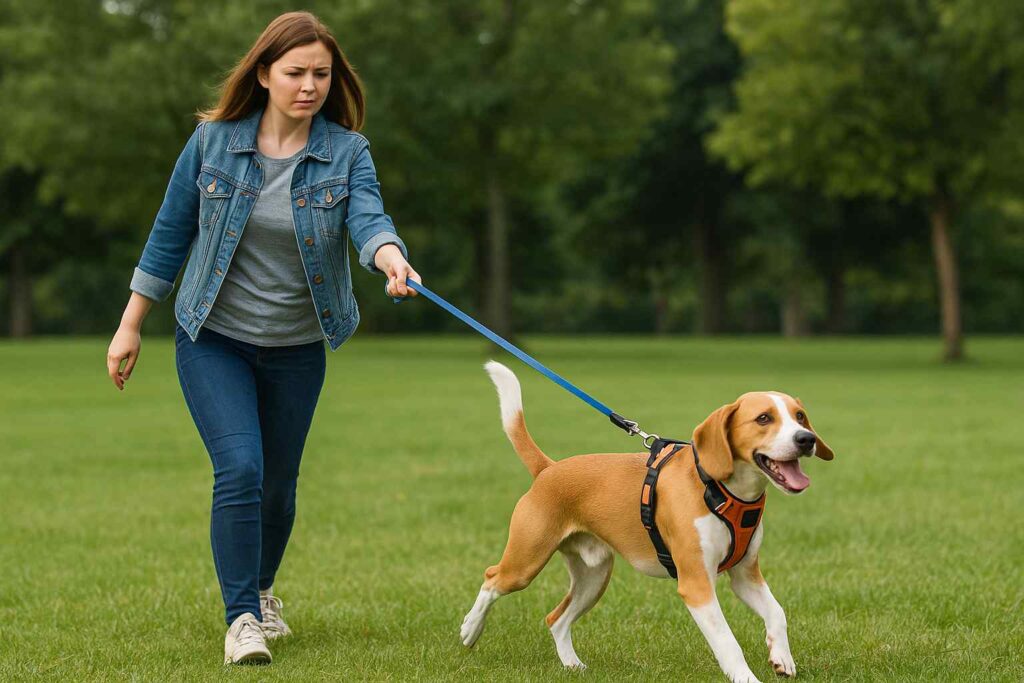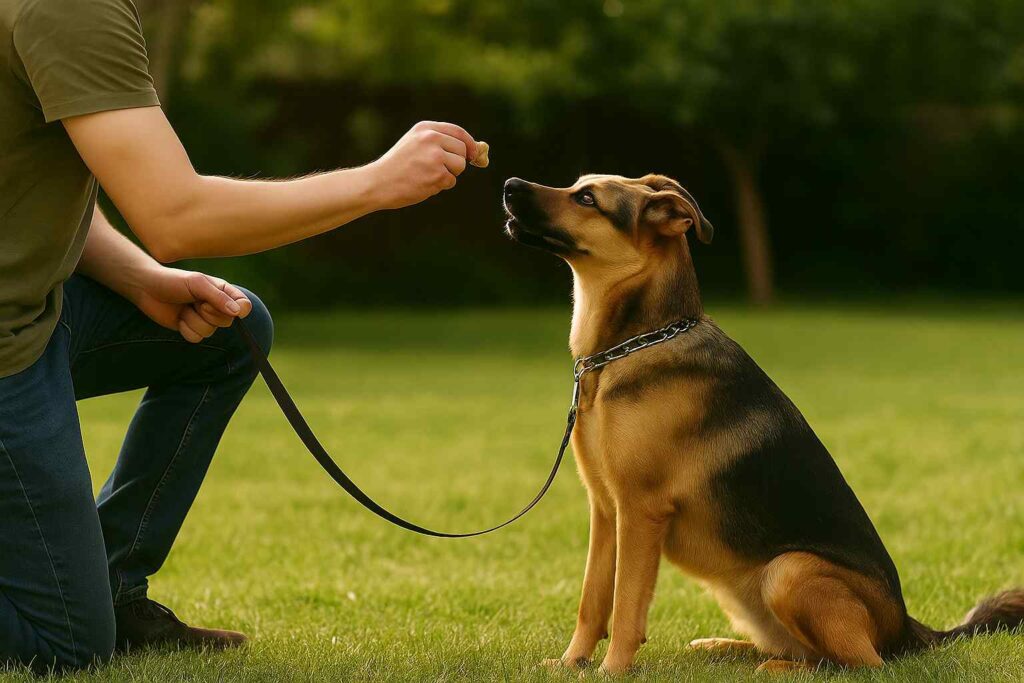Why Does Dog Collar Fit Matters?
Ever noticed a red mark on your pup’s neck and wondered, “Did that collar just rub too much?” I’ve been there. When I first got my German Shepherd, Max, I fitted his collar “by eye.” A few days later, I realized it was sliding around on walks and leaving sore spots. Not ideal.
Fitting a dog collar properly isn’t just about comfort—it’s about safety. A collar that’s too tight can restrict breathing or irritate, while one that’s too loose might let your dog slip free entirely. This guide draws on real-life mistakes and lessons learned in my household, as well as consultations with trainers. so you can avoid discomfort and stress for your furry friend.
By the end, you’ll know:
- How to choose the right collar type and size
- The step-by-step method to fit it correctly
- How to check it regularly to avoid soreness or slippage
- Personal tips and reminders based on breed and activity
Let’s help make sure your dog’s collar fits just right—whether you’re introducing a new puppy or upgrading gear for a larger breed!
Choosing the Right Collar for Your Dog
Not sure which collar type suits your pup? Before fitting, you’ll want to explore the best dog collar options for every breed and lifestyle.
Flat Collars (Nylon or Leather)
Best for: Everyday walking, casual use.
What to look for: Lightweight, soft edges, superior buckle quality—metal over plastic.
Martingale Collars
Best for: Dogs that slip out easily (like Greyhounds, German Shepherds)
Note: Provides gentle tightening without choking; still requires proper fit to be effective.
Head-Halter & No-Pull Collars
Best for: Strong pullers or training walks
Warning: Must fit snugly; put pressure on the nose, not neck—follow manufacturer fit instructions closely.
GPS/Smart Collars
Best for: Escape artists or off-leash safe handlers
Reminder: Still make sure they’re snug but comfortable; wires shouldn’t irritate the skin.
Step-by-Step: How to Fit a Dog Collar Properly
1. Measure Your Dog’s Neck
Use a soft tape measure—or a ribbon you can mark and check—around the widest part of your dog’s neck.
Tip: Measure midway between the bottom of their ears and the base of their neck. Practices vary, but always measure before the first walk to avoid guessing.
2. Add 2 Finger-Width Space
Place two fingers under the clasp area. The collar should allow that space comfortably.
Too tight? You can’t slip a finger in.
Too loose? More than two fingers go in easily or collar wobbles.
3. Adjust Buckles or Sliders
Many collars have sliding adjustments. If yours doesn’t, choose a size with a few notches of room to grow—especially for puppies.
Check for tug resistance—while still retaining two-finger space.
4. Snap or Buckle It—Check Visibility
Once snapped, slide it around gently forward and back. The collar shouldn’t rotate completely around the neck.
5. Elevate a Final Spot Check
Press to feel if any part chafes or digs. Let your dog walk around for a few minutes—if they scratch or rub the spot, tighten or shift.
Signs Your Dog’s Collar Needs Adjustment
Too Tight – Symptoms include:
- Red marks or indentations
- Coughing or gagging—if airway pressure is present
- Pawing at the collar area
- Difficulty swallowing
- Irritated skin or bald patches
Too Loose – Symptoms include:
- Collar spins around neck completely
- Dog pulls free during recall or walk
- Name tag completely rotates under chin
- Collar slips upward and catches behind ears
Common Problem: A collar that fits fine in the morning may get too tight as the day goes on if the dog spends hours lying with it. Double-check for comfort at least once a day.
Adjusting Fit for Puppy vs. Adult
Puppies
- Change collar every few months—puppies grow fast.
- Use adjustable collars and mark settings lightly with a pen.
- Always leave room for growth but reassess fit monthly.
Adult Dogs
- Re-check collar fit every season—coat thickens in colder months.
- If using a martingale style, ensure the ring sits just behind the widest neck point and tightens cleanly without choking.
If you’re welcoming a large breed like a German Shepherd, here’s a full checklist you’ll love to get everything just right—including collar fitting.
Learning Through Real Moments
When I first fitted Max’s collar, I thought “it feels right.” But one day at the dog park, he shook vigorously and burst out of his collar, pulling it off entirely—and escaping. That moment taught me to double-check fit after every major tug or shake, and to set proper tightness rather than just comfort level.
My friend Lily has a tall leash-pulling Lab named Juno. She switched to a padded martingale and found that if it’s snug enough to prevent slips but still gives a two-finger gap, he walks controlled but comfortable—no more choke reflex or sudden breaks.
Collar Fit FAQs
Can I measure a dog while wearing another collar?
You can—but it can add slack. Best practice: Remove all collar gear before measuring to get accurate neck size.
Should I leave my dog’s collar indoors?
If your dog doesn’t scratch at it and it’s properly fitted, brief wear is okay. However, remove at night to avoid skin irritation or tangling.
How often should I check the collar fit?
Every few weeks for active adults; every few days for rapidly growing puppies. Also check after bathing or water activities, which can shrink or loosen certain straps.
Tools and Products That Promote Good Fit
- Soft measuring tape or tailored ribbon
- Collars with adjustable sliders or multiple buckle holes
- Light padded options for dogs with neck sensitivity
- Reflective or leather collars: strong but allow minor stretch with use
- Tag part: quick-release buckle for emergencies
Training Tips to Prevent Collar Escape
- Leash training: Use the loose collar setting until the dog learns not to pull forward.
- Trial walks: After initial fit, walk indoors with a 2–5 ft leash and practice turns, stops, and recall. Watch if the collar shifts.
- Carry treats while measuring: Pair it with praise so collar fitting becomes a positive routine step.
Seasonal & Activity-Based Adjustments
Cold Weather
Dogs fluff up—check that collar still fits well with the thicker neck fur.
After Bath or Swim
Wet collars, especially cloth or leather, may shrink slightly. Let dry and re-check fit.
After Weight Gain or Loss
If your dog changes shape, re-measure. A fit collar becomes a health tracker too.
Final Thoughts: A Collar Fit Checklist
Keep this quick check handy:
- Two-finger comfort gap around the neck
- Collar doesn’t rotate fully
- No red marks or irritation
- Not rubbing behind ears
- Snug enough the dog can’t slip free
Fitting a dog collar correctly is about more than just size—it’s about safety, comfort, and confidence whenever you walk your dog. I hope my stories, tools, and tips make it easier for you to get it right the first time. Now, measure that pup—and watch them roam safe and snug!




